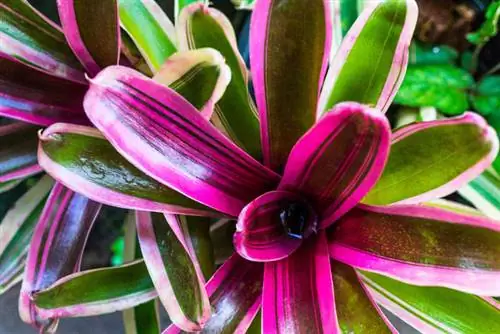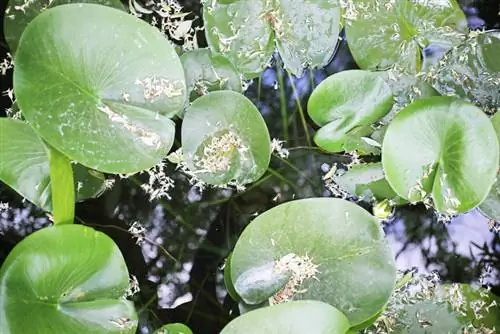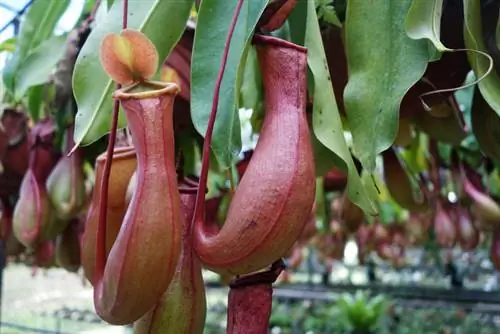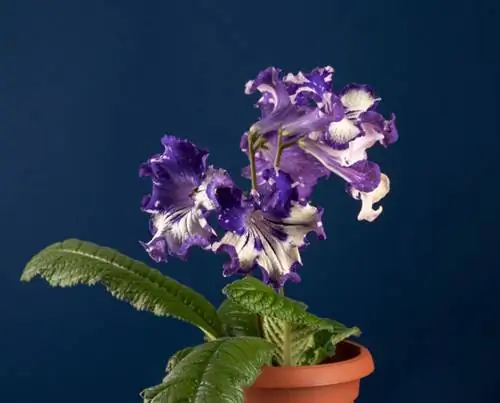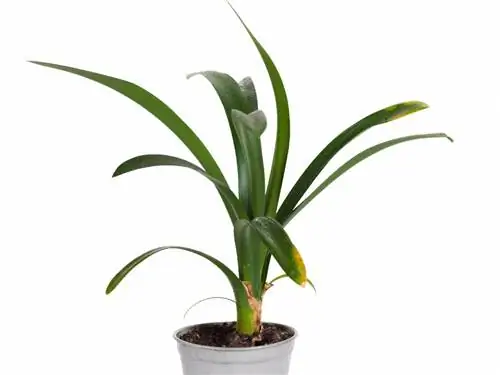- Author admin [email protected].
- Public 2023-12-16 16:46.
- Last modified 2025-06-01 06:02.
With its magnificent decorative leaves and colorful flowers, the bromeliad makes a passionate plea not to just make a one-off appearance as a houseplant. Good to know that the tropical beauty fulfills the desire for uncomplicated propagation with ready-made offshoots. This green guide explains how to properly care for baby bromeliads for breeding.
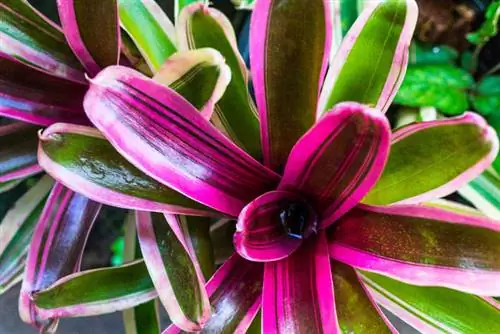
How do I properly propagate a bromeliad?
Bromeliads reproduce through daughter plants that emerge after the mother plant has flowered. As soon as a daughter plant is at least 10 cm tall and has its own roots, it can be separated from the mother plant with a sharp knife and planted in bromeliad soil. High humidity promotes the growth of the young plant.
Dying mother plant gives birth to daughter plants
Characteristic of the fascinating bromlia species is the floral swan song after their unique flowering period. As the mother plant withers, it invests all of its energy in growing offshoots as daughter plants. We owe this strategy to ready-made mini bromeliads. In order for the children to transform into magnificent adult ornamental plants, it is important to separate them at the right time and to provide them with professional care. How to do it right:
- Place a faded bromeliad in a bright, warm location
- Do not remove the wilted inflorescence
- Continue the current care program with watering and fertilizing
- Include all side shoots at the base in the care
A daughter plant is only prepared for an independent existence when it has a rosette of leaves and its own roots. Furthermore, it should have exceeded a height of 10 cm. Ideally, a child has reached half the height of the mother plant at the time of separation.
Separate and care for daughter plants professionally - This is how it works
If the mini bromeliad has met the requirements for an independent plant life, separate it from the mother plant with a sharp, disinfected knife. After the cut surface has dried slightly, pot the daughter plant like this:
- Fill a medium-sized cultivation pot with drainage made of expanded clay (€19.00 on Amazon) and acidic bromeliad soil
- Plant the rosette up to the lower leaf crown
- Press and water the substrate
- Fill soft, room temperature water into the small cistern
The focus of care is on high humidity during the first few weeks after the separation. Therefore, place a transparent plastic bag over the growing pot, using two wooden sticks as spacers to prevent direct contact with the small bromeliad. Keep the substrate slightly moist and regularly top up the water level in the funnel. Add liquid bromeliad fertilizer to every fourth watering water. If new leaves sprout, the hood has fulfilled its task.
Tip
The propagation of bromeliads by sowing proves to be complicated and time-consuming. The seeds can only germinate under constant conditions in a partially shaded location with 28 to 30 degrees Celsius and a humidity of more than 80 percent. A long process of patience of 5 or more years is required until the hoped-for flower appears above the leaves.

